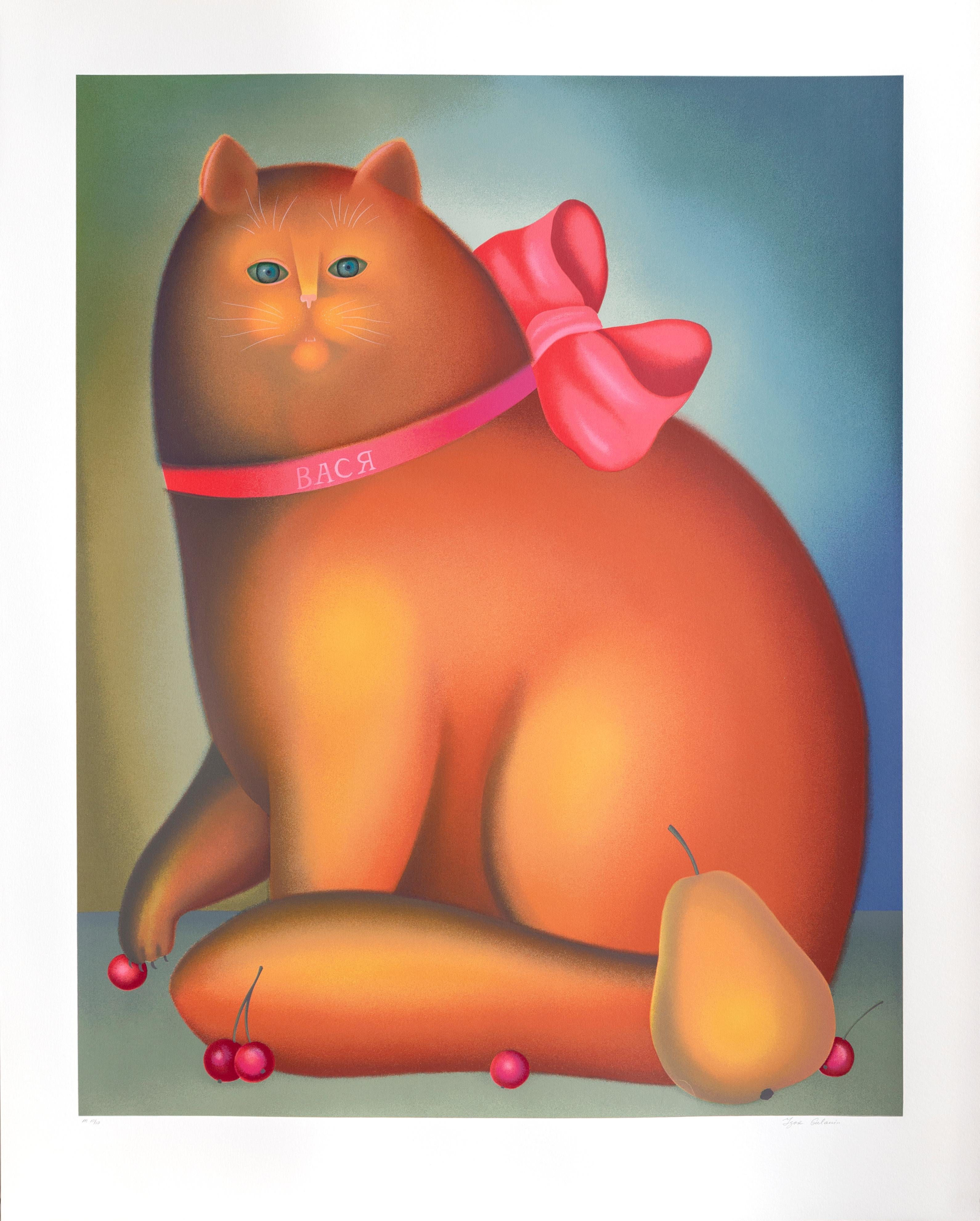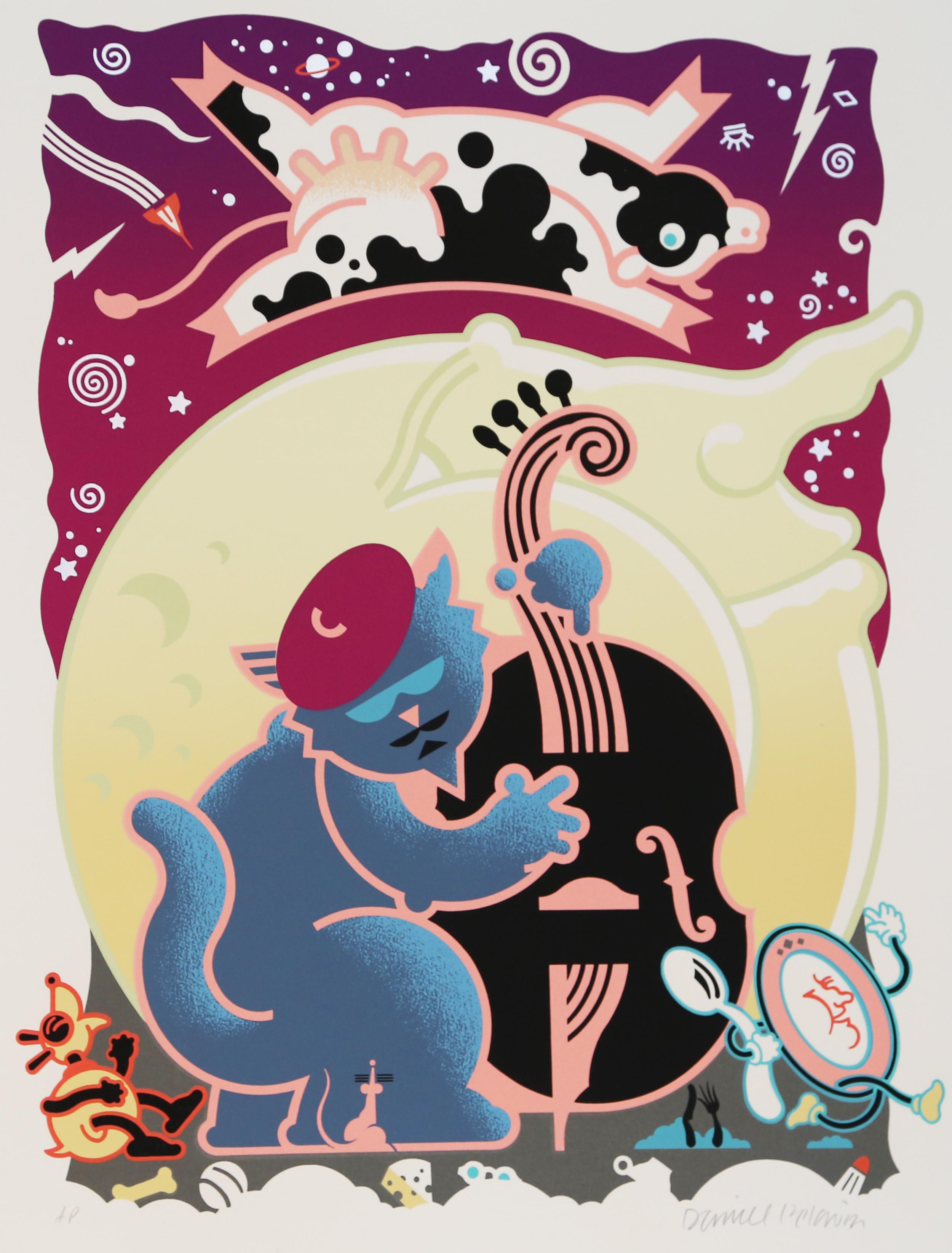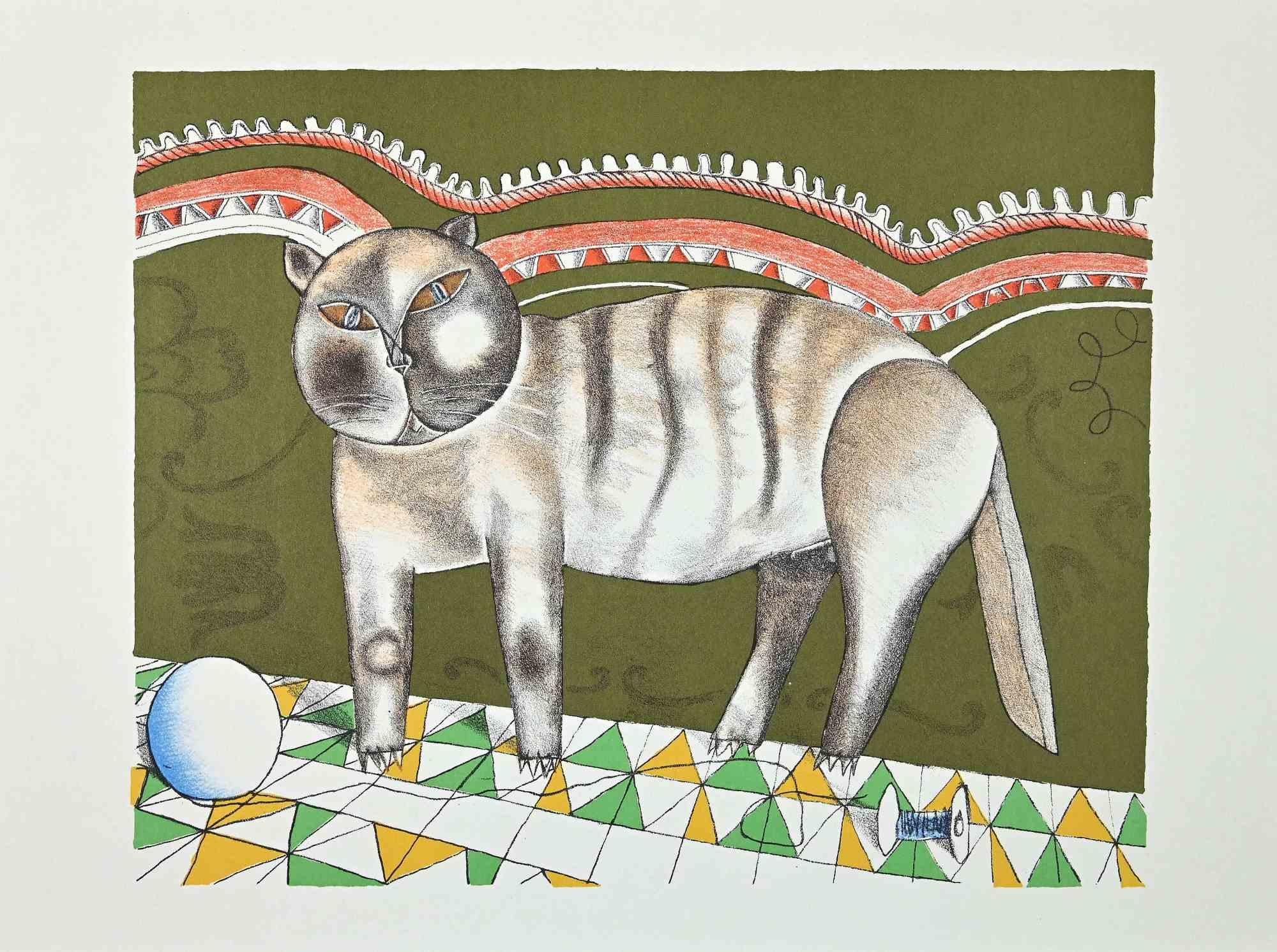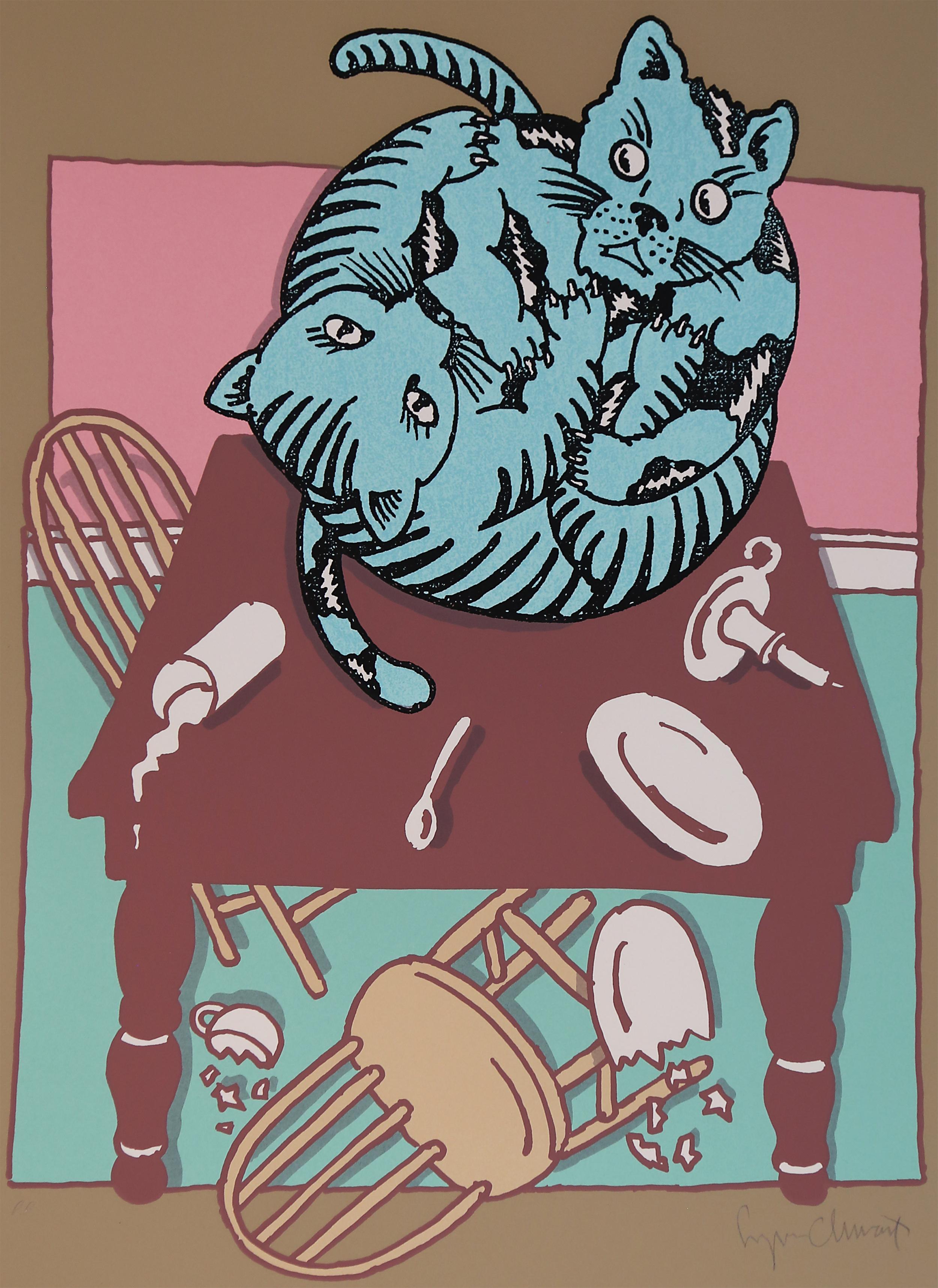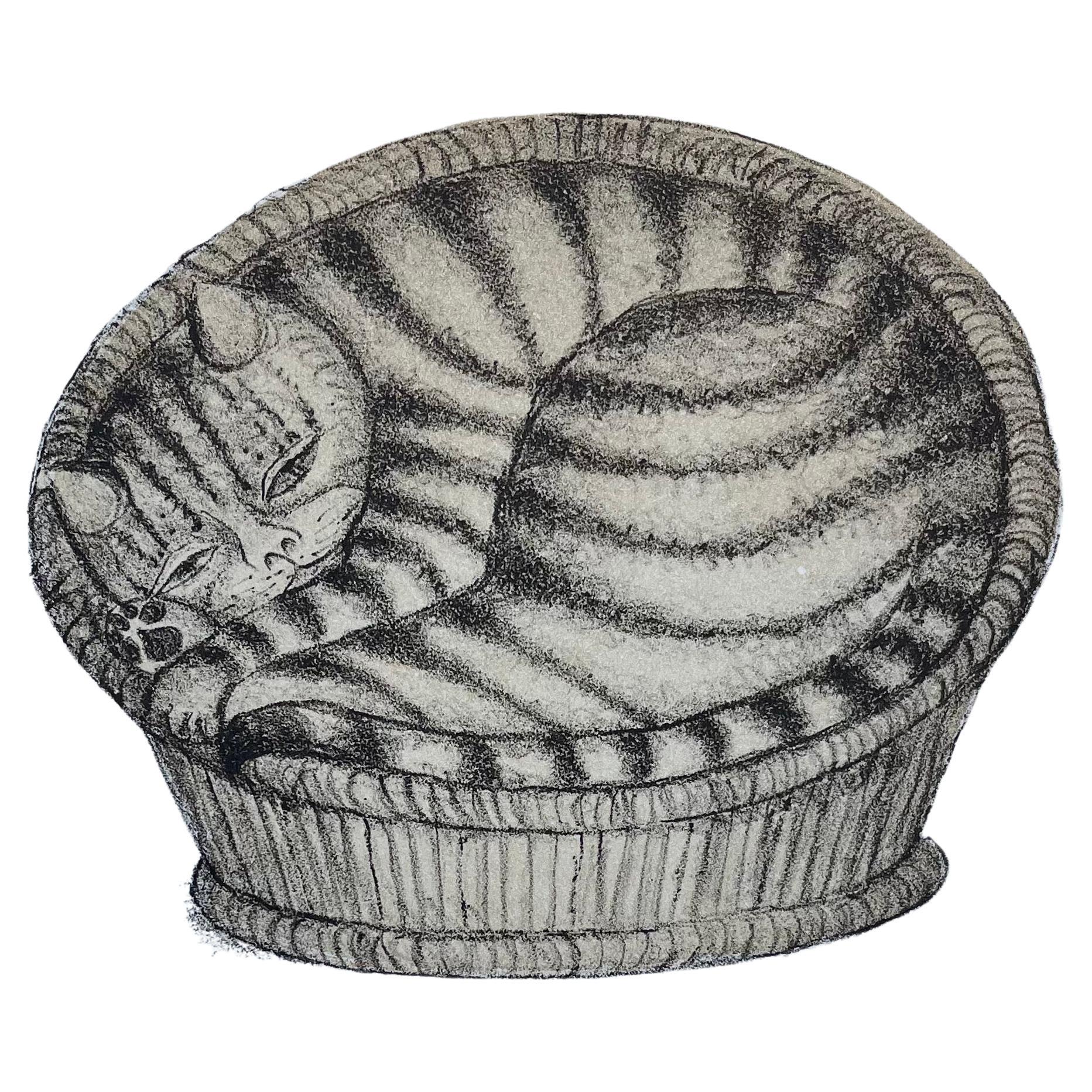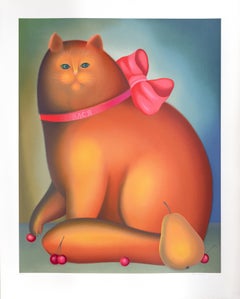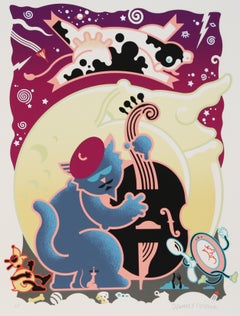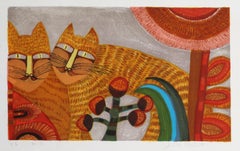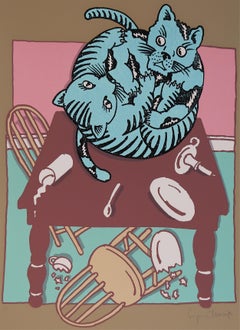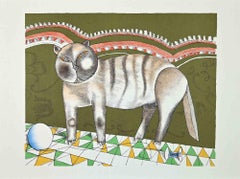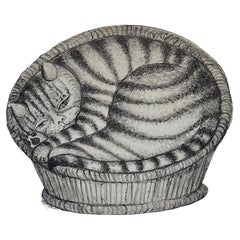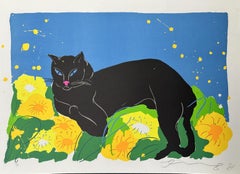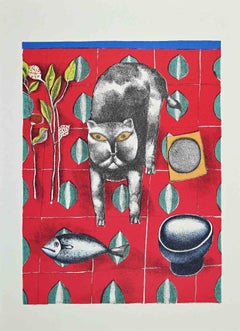Items Similar to The Cat Fifer from Metropolitan Cats Series, Folk Art Lithograph by Fred Bornet
Want more images or videos?
Request additional images or videos from the seller
1 of 6
Fred BornetThe Cat Fifer from Metropolitan Cats Series, Folk Art Lithograph by Fred Bornet1980
1980
$350
£264.48
€305.41
CA$489.07
A$542.67
CHF 284.26
MX$6,654.55
NOK 3,615.70
SEK 3,413.06
DKK 2,277.66
Shipping
Retrieving quote...The 1stDibs Promise:
Authenticity Guarantee,
Money-Back Guarantee,
24-Hour Cancellation
About the Item
Bornet's true passion dating back to his early years in Belgium, is cats. He has written and illustrated several books, among them: "Cats are Poets", "Cats are Clowns", "How to Raise a Unicat", and, most recently, the ultimate ballet book, "Pas de Cat". He is currently engaged in painting interpretations of famous masterpieces from Leonardo to Chagall, each endowed with an improbable, yet delightful, feline twist.
The Cat Fifer (after Manet) from the Metropolitan Cats Series
Fred Bornet, American (1915)
Date: 1980
Lithograph, signed in pencil
Edition of AP
Image Size: 23 x 17 inches
Size: 27 in. x 20.5 in. (68.58 cm x 52.07 cm)
- Creator:Fred Bornet (1915, American)
- Creation Year:1980
- Dimensions:Height: 27 in (68.58 cm)Width: 20.5 in (52.07 cm)
- Medium:
- Movement & Style:
- Period:
- Framing:Framing Options Available
- Condition:
- Gallery Location:Long Island City, NY
- Reference Number:Seller: RO102281stDibs: LU46612024602
About the Seller
4.9
Platinum Seller
Premium sellers with a 4.7+ rating and 24-hour response times
Established in 1979
1stDibs seller since 2014
3,040 sales on 1stDibs
Typical response time: 1 hour
- ShippingRetrieving quote...Shipping from: Long Island City, NY
- Return Policy
Authenticity Guarantee
In the unlikely event there’s an issue with an item’s authenticity, contact us within 1 year for a full refund. DetailsMoney-Back Guarantee
If your item is not as described, is damaged in transit, or does not arrive, contact us within 7 days for a full refund. Details24-Hour Cancellation
You have a 24-hour grace period in which to reconsider your purchase, with no questions asked.Vetted Professional Sellers
Our world-class sellers must adhere to strict standards for service and quality, maintaining the integrity of our listings.Price-Match Guarantee
If you find that a seller listed the same item for a lower price elsewhere, we’ll match it.Trusted Global Delivery
Our best-in-class carrier network provides specialized shipping options worldwide, including custom delivery.More From This Seller
View AllCat with a Bow, Modern Signed Screenprint by Igor Galanin
By Igor Galanin
Located in Long Island City, NY
Artist: Igor Galanin, Russian/American (1937 - )
Title: Cat with a Bow
Year: circa 1985
Medium: Serigraph, signed and numbered in pencil
Edition: 100
Size: 40.5 x 32.5 in. (102.87 ...
Category
1980s Folk Art Animal Prints
Materials
Screen
Cat and the Fiddle, Pop Art Screenprint by Daniel Pelavin
Located in Long Island City, NY
An illustration of a black cat in a beret playing an upright bass. Behind him is a cow gracefully leaping over a moon with a long nose and smiling face. In one corner, a plate runs hand in hand with a spoon. From the Mother Goose Portfolio, this piece is signed and numbered by the artist.
Cat and the Fiddle...
Category
1990s Folk Art Animal Prints
Materials
Screen
$680 Sale Price
20% Off
Cats, Folk Art Lithograph and Blind Embossing by Judith Bledsoe
By Judith Bledsoe
Located in Long Island City, NY
Judith Bledsoe, American (1938 - 2013) - Cats, Year: circa 1980, Medium: Lithograph and Blind Embossing, signed and dedicated in pencil, Edition: EA, Image Size: 9.5 x 15 inche...
Category
1980s Folk Art Animal Prints
Materials
Lithograph
Kilkenny Cats - Screenprint by Seymour Chwast
By Seymour Chwast
Located in Long Island City, NY
Two blue cats tussle and fight on top of a laid dinner table, knocking dishes and candles everywhere. Done in a simple illustration style and created using only six colors, the edges...
Category
1990s Pop Art Animal Prints
Materials
Screen
$680 Sale Price
20% Off
Nine Lives, Folk Art Lithograph by Judith Bledsoe
By Judith Bledsoe
Located in Long Island City, NY
Judith Bledsoe, American (1938 - 2013) - Nine Lives. Year: circa 1980, Medium: Lithograph, signed and dedicated in pencil, Edition: EA, Size: 30 x 21 in. (76.2 x 53.34 cm), Descript...
Category
1970s Folk Art Prints and Multiples
Materials
Lithograph
Cat in Chair, Naive Art Screenprint by Igor Galanin
By Igor Galanin
Located in Long Island City, NY
Artist: Igor Galanin, Russian/American (1937 - )
Title: Cat in Chair
Year: circa 1985
Medium: Serigraph, signed and numbered in pencil
Edition: 175, XXX
Size: 46.5 in. x 35 in. (118...
Category
1970s Folk Art Interior Prints
Materials
Screen
You May Also Like
Cat - Offset Print by Franco Gentilini - 1970s
By Franco Gentilini
Located in Roma, IT
Cat is an original Vintage Offset Print on ivory-colored paper, realized by Franco Gentilini (Italian Painter, 1909-1981), in the 1970s.
The state of preservation of the artwork is ...
Category
1970s Modern Figurative Prints
Materials
Offset, Paper
François-Xavier Lalanne - Le Chat (the cat), 2004
By François-Xavier Lalanne
Located in Saint ouen, FR
François-Xavier Lalanne (1927-2008) Le Chat (the cat), 2004
Original print (aquatint and soft varnish) hand signed in pencil by François Xavier Lalanne and untitled "Le Chat" ("The C...
Category
Early 2000s French Modern Prints
Materials
Paper
Black Cat 1981 Lithograph on Arches Archival Paper
By Walasse Ting
Located in Rochester Hills, MI
Artist: Walasse Ting
Title: Black Cat - Midnight Cat
Year: 1981
Medium: Lithograph on Arches Archival Paper 22'' x 30''
Edition: Signed in pencil and marked AP
Walasse Ting (DING...
Category
1980s Pop Art Animal Prints
Materials
Lithograph
Cat and Fish - Offset Print by Franco Gentilini - 1970s
By Franco Gentilini
Located in Roma, IT
Cat and Fish is a Vintage Offset Print on ivory-colored paper, realized by Franco Gentilini (Italian Painter, 1909-1981), in the 1970s.
The state of pres...
Category
1970s Modern Figurative Prints
Materials
Offset, Paper
Old Puss in Boots, Limited Edition Prints, Affordable Art, Animal Print
By Tim Southall
Located in Deddington, GB
Old Puss in Boots' by Tim Southall. Old Puss in Boots is a seasoned performer, spinning tales to a packed theatre audience. Once sprightly, he now stands with a cane, but age has not...
Category
21st Century and Contemporary Contemporary Animal Prints
Materials
Screen
Cats of all nations unite
By Pedro Freideberg
Located in Ciudad de México, MX
Cats of All Nations Unite is a whimsical yet deeply symbolic work by Pedro Friedeberg, celebrating his distinctive blend of surrealism, satire, and architectural fantasy. Known for t...
Category
2010s Surrealist Figurative Prints
Materials
Screen
More Ways To Browse
Folk Art Cat
Chagall Ballet
Chagall Clown
Folk Art Clown
Elizabeth Gould Birds
Gould And Richter
Toucan Print
Humming Birds
Rodrigue Blue Dog Artist Proof
Audubon Elephant Folio
Edward Lear Birds
Ornithological Watercolors
Audubon Double Elephant
Eagle Lithograph
Rabbit Lithograph
Cambridge Poster
Owl Pencil
Sandwich Islands
